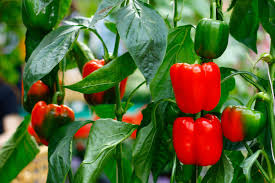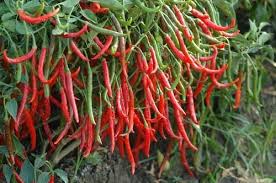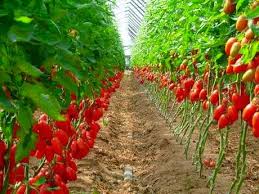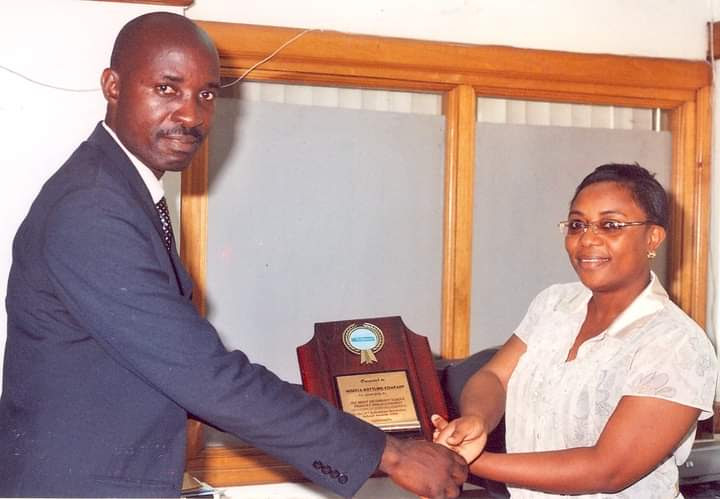![]()
If you’ve landed on this article page, you’re probably searching for a
good business idea—an idea that’s light on the pocket but heavy on
returns, promising both a fulfilling journey and potential profit.
|
How to Start Pepper Farming in Nigeria
Pepper farming is one of the most profitable businesses in
Nigeria and other countries of the world. Just like tomato
farming and cucumber farming, pepper farming can be very
lucrative
Pepper is one of the most important spices used in making most
Nigerian food. There is hardly a complete meal without the use
of at least one variety of pepper. This makes pepper production
an important area of crop production in Nigeria.
The Market for Pepper Production
Rising domestic demand, coupled with a drop in exports,
continues to set the trend for the pepper market and pepper
production. The main suppliers of the commodity to the global
market are Vietnam, India, Indonesia and Brazil; while the major
destinations for its export are the US, Europe, Japan and
Australia
The domestic demand for pepper has increased over time which has
resulted in the decline in the quantity of pepper being exported
in several producing countries. This signifies that there is a
need for an increase in the supply of pepper to make up for the
increase in the domestic demand and to also give room for
exportation.
It is worthy of note that despite the production level of pepper
in Nigeria, pepper is still being imported. A general increase
in pepper yield in Nigeria could be enhanced by the cultivation
of improved cultivars, and intensification of cultural
practices.
Nursery Preparation: In pepper production, the soil used for
raising nursery should be rich, well-drained and free of
diseases and insect pests. Make seedbeds with topsoil mixed with
compost (30 x 45 x 8 cm) on nursery beds or trays. Leave an
upper space of about 20cm for watering while using trays. Beds
should be about 1meter long with an inter-row space of about 1m
also.
Bed Fumigation/Heat Treatment: Treat nursery soil mixture with
fumigant to kill pests, fungi, weeds, etc. in the soil. VAPAM
could be used at the rate of 1 liter to 20 liters of water per
bed of 1 m x 10 m. Wet soil heavily to a depth of 15 cm and
cover with palm fronds when used. Leave a space of about 9-10
days after fumigation before sowing seeds.
Heat treatment is an alternative to bed fumigation. It is done
by burning trash on the bed and then removing the ash.
Sowing: Water the beds about 14hours before sowing. Make drills
of 5-10 cm apart across the bed and sow about 100 seeds per
drill. Cover lightly. Thin the seedlings to 1 per 2.5cm of drill
15–20 days after sowing. Alternately holes can be made at 4 x 4
cm apart on the bed and 3–4 seeds dropped in each hole. The
seedlings are later thinned to one per hole. Similarly, seeds
can also be drilled or planted in specific spacing (4 cm x 4 cm)
in the tray.
Watering: Water the seedlings daily when the sun is not out
preferably in the morning. Reduce the quantity and frequency of
watering during the hardening of seedlings. Avoid excessive
watering as it makes susceptible to diseases such as damping
off.
Land Preparation: Beds could be of any length but preferably
with a width of 1meter. The required land preparation includes
plowing, harrowing bed preparation should be done 7 days before
transplanting.
Transplanting: Plant using 70cm inter-row spacing and 50cm Intra
row spacing. Water the seed tray and beds in the nursery, after
which you could uproot the seedlings. Two rows may be arranged
on a bed.
Fertilizer Application: A complete fertilizer such as N.P.K.
15:15:15 can be carried out about 2 weeks after transplanting at
the rate of one matchbox fertilizer to two plants. Draw a circle
round the base of the plant and carefully spread the fertilizer
in the groove. Cover lightly with soil. The circle should be
reasonably far from the stem of the plant. A distance of about 4
–7cm is all right.
The second application should be performed at 50% flowering. The
application rate is one matchbox per plant. Water the plant
immediately after applying the fertilizer. The most important
pest of pepper is fruit fly.
Harvesting: Pepper is usually harvested red or as it starts to
turn red except for bird pepper which can also be harvested
green because it may be consumed green for some special
delicacies. Harvesting can be done once or twice a week. It is
usually harvested into baskets and sacks.
Yield: Pepper production can produce a high return once it is
properly cultivated, managed, and free from pest and disease
attack. The production of pepper in Nigeria is profitable and
economical.
Disease and Insect Control:The seedlings should be sprayed
regularly with pesticides like Ambush and fungicide diaphane for
the control of insects and diseases before they are
transplanted.
Storage: Pepper can be dried and stored in sacks. Dried pepper
has a longer shelf life than fresh pepper. Dried pepper can be
further processed by grounding it into powdery form. This
powdered pepper can be easily added to food, either during or
after cooking. Fresh pepper can also be stored in the house in a
cool dry place for about a week.
Get our Practical Guide on Pepper Farming in Nigeria. This
comprehensive guide will walk you through every aspect of Pepper
Farming in Nigeria, from understanding the crop to marketing
your harvest.
|







